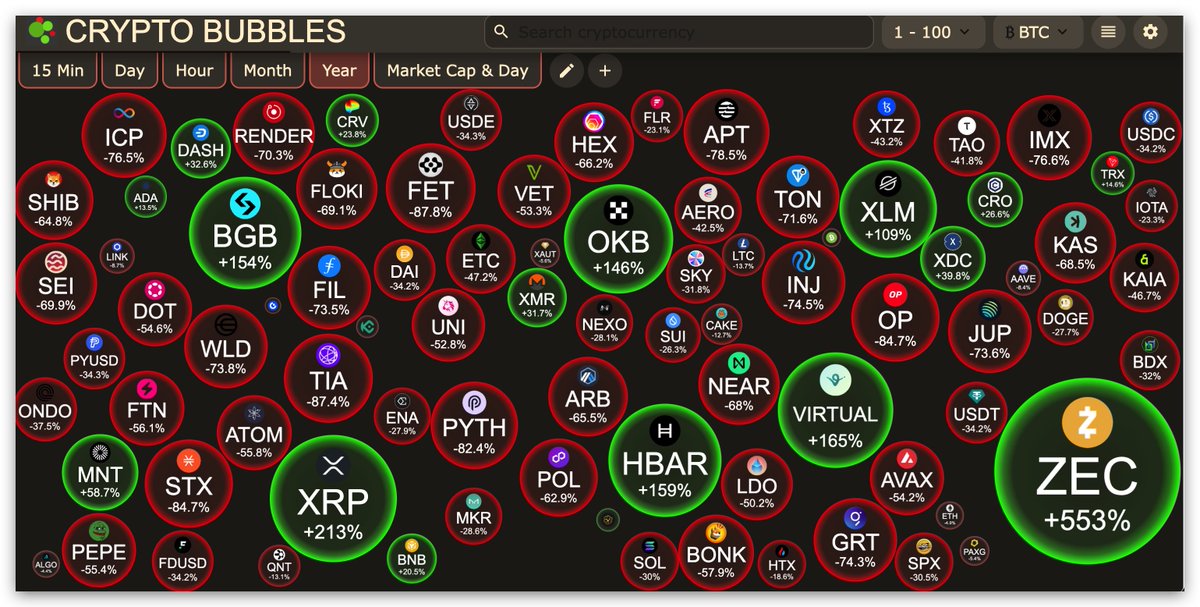This chart shows the exchange rate performance of the top 100 altcoins by market capitalization and BTC this year.
Among them, only a few, such as ZEC, XRP, HBAR, XLM, OKB, BGB, and MNT, have shown true strength against BTC.
Summary of the phenomena:
1. Either the platform token has external opportunities or strong control, such as OKB's burning and IPO expectations, or BGB's high control.
2. Or they are favored by the US, such as ZEC and XLM's privacy features recently promoted by Naval, or HBAR. This is because of the influx of external capital. The same logic applies to ETH when BMNR rose to prominence, although it's unclear how long this trend will last.
The success rate of going long on altcoins with potential for significant gains is 6/100.
⏶ WLD had a narrative, the Openai + Tomlee DAT narrative, but its performance against BTC was -73.8%.
⏶ SEI had a narrative, the debate over regulatory benefits, but its performance against BTC was -69.9%.
⏶ APT had a narrative, the insider news of Jump's revival was rampant, but its performance against BTC was -78.5%.
⏶ ONDO had a narrative, Blackrock's go-to RWA, ranked number one, but its performance against BTC was -37.5%.
Is it because the market makers aren't working hard enough? No, it's because the rampant issuance of new coins has desensitized people to narratives. There are always new narratives, and the market is constantly being flooded with new information, leading to more and more stagnant stocks.
If you find it difficult, that's normal. Even if the altcoins you choose have had their glory days, statistically, none of them last more than a year. Those with a long-term vision will eventually see their gains evaporate. With a 6% probability, picking a high-performing altcoin is like flipping a coin and hitting it four times in a row.
You should be grateful if you hit it twice.


